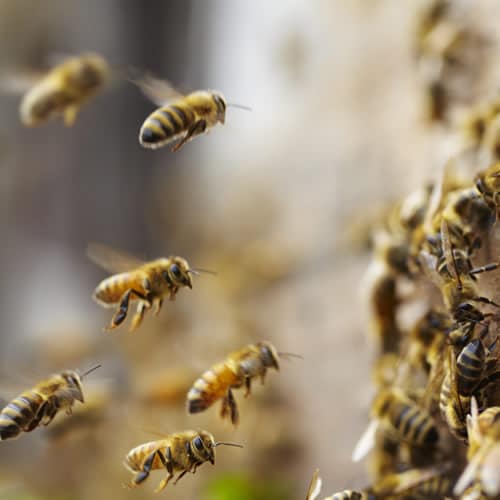Wireless Frequency Protection
MNZ: Protecting Honey Bees from Wireless Frequency Exposure
In recent years, concerns have emerged about the potential long-term effects of frequencies used in Wi-Fi and wireless networks on the health and well-being of honey bees. As the critical role of bees as pollinators in sustaining ecosystems becomes increasingly recognized, MNZ takes proactive measures to safeguard the health and navigation abilities of these vital creatures.
A Responsible Approach to Hive Placement
MNZ acknowledges the potential risks associated with long-term exposure to wireless network frequencies, including their possible impact on bees’ homing abilities and navigation skills. To address these concerns, MNZ has adopted a strategic approach to hive placement, ensuring:
- Significant distance from radio towers and other sources emitting wireless frequencies.
- Placement in rural, pristine, and isolated areas, free from high levels of electromagnetic interference.
This deliberate strategy reflects MNZ’s commitment to minimizing potential harm and fostering a healthy environment for their hardworking bees.
Safeguarding Bee Well-Being
By prioritizing hive locations away from sources of Wi-Fi and wireless network frequencies, MNZ mitigates potential risks to bees, including:
- Disruption of homing ability essential for returning to the hive.
- Impairment of navigation skills required for effective foraging.
- Overall health concerns linked to prolonged exposure to electromagnetic fields.
Commitment to Sustainable Beekeeping
MNZ’s focus on protecting their bees from potential environmental stressors demonstrates their dedication to sustainable and ethical beekeeping practices. By prioritizing bee health, MNZ ensures their hives remain productive, resilient, and capable of supporting the vital ecosystems that depend on them.

Summary
homing ability under field conditions. To generate this radiation, we used a high-quality radiation source which generates a consistent, definable and realistic electromagnetic radiation, engineered for this experiment by the Communications Engineering Lab (CEL) at the Karlsruhe Institute of Technology. Our results show significant effects of long-term exposures on the homing ability of foraging honey bees, but no effects on brood development and adult worker longevity. Using this novel and high-quality technical set-up, this interdisciplinary work provides new data on the effects of these widely used frequencies on important fitness parameters of free-flying honey bees. M. Treder, M. Müller, L. Fellner, et al., Defined exposure of honey bee colonies to simulated radiofrequency electromagnetic fields (RFEMF): Negative effects on the homing ability, but not on brood development or longevity, Science of the Total Environment (2023) https://doi.org/10.1016/j.scitotenv.2023.165211
In alignment with their commitment to bee health and protection, MNZ carefully avoids placing hives near radio towers and other sources of wireless frequency emissions. This deliberate decision ensures an optimal and natural environment for bees, free from potential disruptions caused by human-made electromagnetic radiation. By minimizing exposure to wireless frequencies, MNZ supports the sensitive navigational systems that are crucial for bees’ foraging, pollen collection, and return to their hives.
Commitment to Bee Health and Natural Instincts
MNZ recognizes the potential risks of long-term irradiation on bees and takes proactive measures to safeguard their natural instincts and behaviors. These efforts include:
- Choosing hive locations far from electromagnetic interference.
- Supporting bees’ homing abilities to ensure efficient pollination and colony vitality.
- Creating an environment where bees can thrive, undisturbed by modern technological impacts.
A Comprehensive Approach to Sustainability
MNZ’s commitment to bee health extends beyond hive placement. Their Bee Protection & Health Program, rigorous quality control processes, and strict compliance with government regulations demonstrate a holistic approach to sustainable beekeeping. By focusing on producing high-quality, raw, unfiltered, unpasteurized, monofloral Manuka honey, MNZ ensures the purity of their products while safeguarding the well-being of their bees.
Leading by Example
In an era dominated by wireless technologies, MNZ sets a commendable example for other beekeeping organizations. Their proactive measures highlight the importance of protecting pollinators and maintaining the delicate balance of ecosystems. MNZ’s dedication to bee health not only supports the sustainability of their colonies but also contributes significantly to preserving the natural environment.



